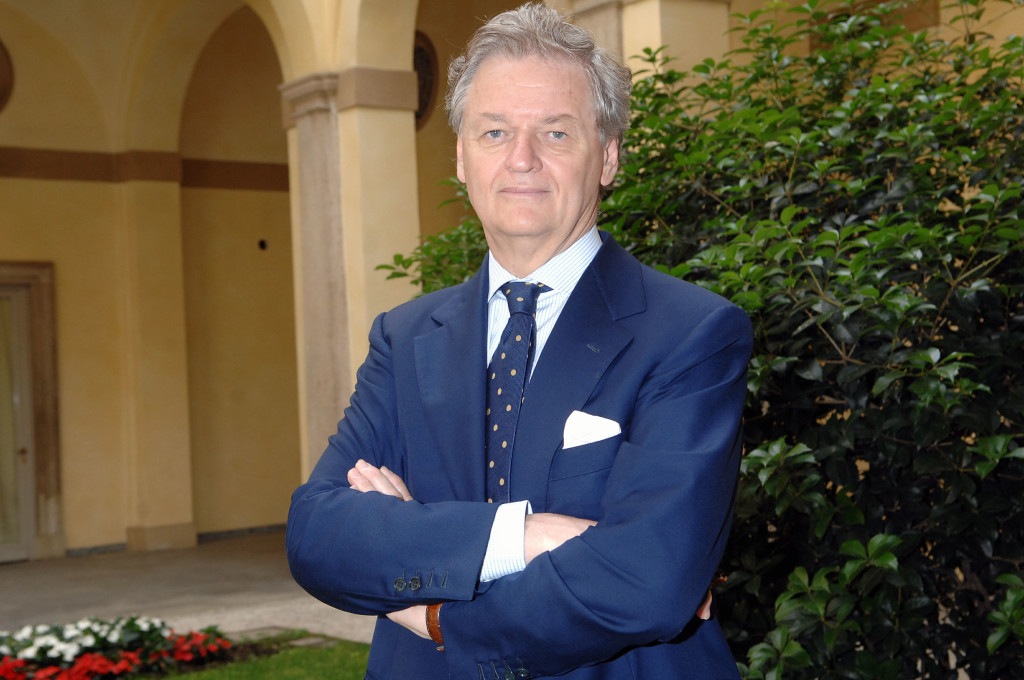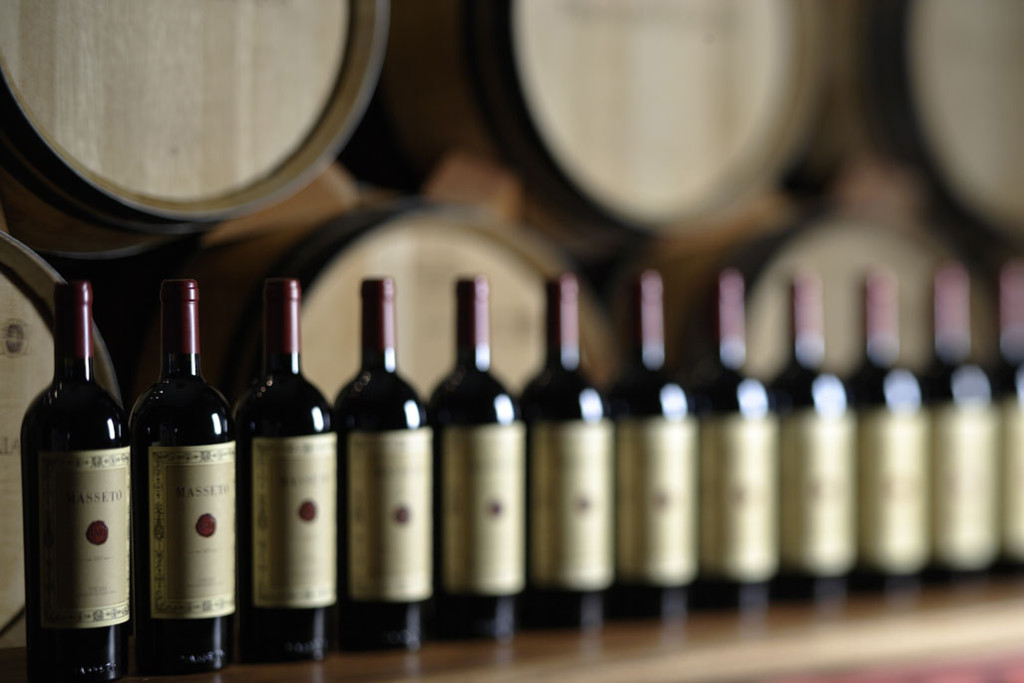Last week, Liv-ex published the first part of an interview with CEO of Masseto and Ornellaia, Giovanni Geddes da Filicaja. In it, he discusses business strategy and the fine wine market. In the second part, below, Giovanni shares his views on pricing wine, Parker’s retirement and the Vendemmia d’artista project.
When were the first vintages of Masseto and Ornellaia?
Ornellaia came first – the first commercial vintage was 1985. The first commercial vintage of Masseto was 1987. In 1986 we produced Merlot dell’Ornellaia with its own unique label, but the name Masseto came in 1987.
What makes Masseto so popular?
It has become a magic name. It’s a magic wine because it really has a very, very strong personality. It comes from a special place – the terroir is very important. This makes it unique.
Clay soils, Merlot grape, small production – sometimes it’s described as the Petrus of Italy…
Others are describing it this way. I don’t think it’s very similar – it’s more opulent than Petrus. However, there are similarities in terms of volume. Another similarity is the pricing. Petrus hasn’t followed the same pricing model as other Bordeaux wines. It has increased progressively, but not as fast. It’s exactly the same for Masseto.
Which are the best Masseto vintages?
Masseto is probably better known for its warmer, very powerful vintages: 2001, 2006, 2011 and 2012 – but cooler vintages like 2007, 2010 and 2013 result in very fine wines that are not as powerful. The ratings are often just as high for these vintages as the warmer years, especially 2010. We didn’t expect this because it didn’t have the same power.
The 2012 is very fruity – it’s elegant and very good. 2013, I think, is just behind 2010. It’s a wine that you can probably drink earlier than you would drink the 2001 or 2006. It shows wonderful elegance, finesse, and depth.
Do you feel that any of your vintages have been underrated by critics?
2007 was a very elegant wine that I loved, but it didn’t get the ratings we expected – 96 points from the Wine Advocate.
What does Parker’s retirement mean for you?
It doesn’t matter to us because we haven’t built our brands around any one wine writer. I don’t think there will be anybody as powerful as Robert Parker in the future. There will probably be three or four publications like Wine Advocate, but none as important. One is Wine Spectator which caters for consumers interested in wines at lower price points. Antonio Galloni is very highly regarded in America, as is James Suckling. The Italian critics have slightly lost their clout – their ratings are more complicated and people don’t understand as easily; the Americans are very pragmatic with their 100-point scores.
Is there a danger that we have too many good vintages these days? The days of the 70s and 80s, where you had a variety of vintages, are gone. If we don’t have the weaker vintages any more, will we have too much wine?
I believe that this has a lot to do with the economy – you need to look at the vintages in this context. If you look at the 30s and 70s, people didn’t put the same effort in and they didn’t have the technology.
I also think that consumers will increasingly look at the brand before they look at the vintage. The tendency is to look at the brand and say, ‘I am drinking a great wine – what vintage is it?’ rather than looking at the vintage first.
This is partly related to wines being drunk earlier. Once they are sold I think wines are probably drunk within 18 months. You find less old wines in restaurants now, so people will get used to younger wines. Because of all of this, it’s very important that the brand guarantees the absolute quality, and not just the vintage.
In our case, the brand is significantly more important unless you are a serious collector or working in the auction business. I think this puts us in a stronger position than Bordeaux.
Your background – your studies and then your early work – is commercial. Has this informed how you think about wine?
I think that I have addressed wine from the perspective of the consumer, at a very high level, and also as a merchant, rather than just looking at what we produce.
To market the wine you need to have the best wine maker who is also be able to present themselves, and no-one can do the job of presenting themselves unless he knows what he is talking about. You can’t just rely on public relations.
So you need the economists and the wine maker. The other thing that is very important is to build a team who work together – completely together – from the vineyards to the final consumer.
It is also important to talk to the key quality collectors in the world. We’ve been very good at doing that with the press.
To produce a great wine, you also the need to help of the economy to make it greater – great wine costs more than simple wine. You cannot take shortcuts at anything. Value comes from the consumer. It doesn’t come from cutting cost. It comes from getting a better price.
Does the way you think set you apart from other producers in Tuscany?
Yes, very much so. Most of the wines are being produced by producers. They think of the cost first – it’s seen as an agriculture business first and foremost. You have to understand what it means to build value.
So a lot of people focus on producing the best wine and then as a secondary thought they have to go on and sell. But they think of just selling it – but not going beyond this and communicating with collectors, and so on. They don’t think they have time to do it – maybe they are too small, but then they stay small.
You can produce a great wine at a low price just with good skills in the vineyard. And if you let the world sell it for you and the market sell it for you, it’s not such a bad business…
Yes, but you are looking at running a business just to have enough money to make a good living.
To establish a brand with more value for long term investors, for your family and for your country – because a brand is something valuable even for your country – requires more than this.
Top fashion labels understand that they are brands, not just textile producers making t-shirts. At that point they change from being a company of ten to a company of 1,000. A company like Loro Piana, which is now part of LVMH, is valued in the billions. They were t-shirt producers before.
After understanding this, a similar thing happened to wine producers in Tuscany. They had to move to the next level with merchants and with the consumer because that’s where the value starts.
Can you tell us about the Vendemmia d’artista project? How do you choose the artist?
[Every year since the release of Ornellaia 2006 in May 2009, a contemporary artist creates a work of art and a series of limited edition labels drawing inspiration from the single word chosen by the Winemaker to describe the character of the new vintage. A limited number are created and sold at auction.]
We have a curator who has been with us since the beginning. He’s a curator professionally – he’s worked all over the world – and he happens to be the brother of my brother-in-law. We start by defining the character of the vintage – brainstorming together – but he does it mostly. On that basis we look for an artist. It’s a challenging thing to do because great artists are very difficult. It’s a tough job!
This helps us to present the wines and talk about the vintage in a different way.
What would you consider to be the greatest achievement in your career?
As a company, I would say the growth of Ornellaia and Masseto and the separation of the two brands, which is not complete and will take a lot of time – you need separation of people and the brand, and most importantly you need your own winery. Many of the important things in the world are defined in this way. You think of the White House, you think of St Peter’s – the building itself is very important. Without having its own winery, Masseto remains a wine and not an estate. And so building one must happen.
But if you take Ornellaia and Masseto as a whole and the development of the brands in particular, they probably represent my greatest achievements.
[mc4wp_form id=”18204″]





